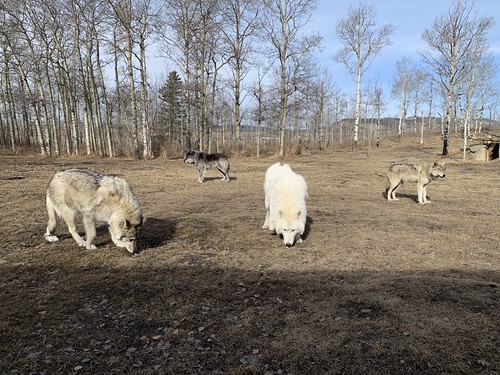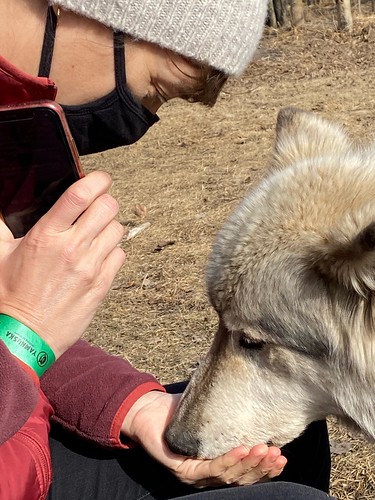Astute Go Stay Work Play Live Readers will have noticed a distinct dearth of blogging in 2021, which I can only say perfectly reflects the amount of bloggy things that I’ve done so far this year. That total being, obviously, zero. Yes, there was a post in January that I pulled out of thin, frigid air without leaving the house. But it was a pale effort. Not so any more! Today I’m pleased to bring you the tale of a day trip to an actual outside activity at an actual touristy destination with an actual friend I’m not related to by blood or marriage. Heady stuff.
It all starts in Calgary, where I’m on what I like to think of as my Farewell Tour, which is basically just me hanging out at my sister’s place for a bit before finally heading back to London. Or at least that was the plan. Now it’s altered slightly to allow me to spend a week in Dubai on Expo-related work stuff first, after which I get the pleasure of spending my ten days of quarantine not in the loving and much-missed “comfort” of the Lucky Nickel, but in a random airport hotel not of my choosing. This is because the UAE is on Boris Johnson’s Red List of countries that require hotel quarantine, while if you’re coming from Canada they trust you to quarantine at home. (Don’t ask me to explain the UK’s semi-porous borders policy. All I know is that it’ll be ten more days before I’m properly home, but at least during those ten days I won’t have to worry about getting groceries, or monitor whether I’ve got enough water left to shower. And I’ll also have enough room to raise my arms above my head. So, you know, swings and roundabouts.)
But back to our exciting and bloggy destination: an outdoor, socially-distanced, fully masked visit to the Yamnuska Wolfdog Sanctuary. This thanks to my friend Patti, with whom I've been doing regular outdoor walks to catch up and get some sun and air. On our last walk Patti mentioned she’d been planning to visit the sanctuary, and considering the most exciting place I’d been in months is Costco, I happily agreed to join her there. (In my defence, Costco actually was kind of exciting, because I got a pair of the new AirPods that Apple started making once they finally admitted that all ears on the planet are not identical in size and shape, and maybe a bit of squishiness on the ends would be a good idea. And all I can say is... noise-cancelling? Life. Changing.)
So… The Yamnuska Wolfdog Sanctuary. It does exactly what it says on the tin. It’s a non-profit site that takes in wolfdogs who are surrendered by their owners or other organisations who can’t care for them, or are rescued from abuse, neglect, abandonment or euthanasia.
The Yamnuska Wolfdog Sanctuary offers a few ways to experience the animals. You can simply do a self-guided walk around the site, observing the wolfdogs in their enclosures and reading the copious informative signage. You can also take the Intro Tour, a guided visit to a fenced viewing platform inside one of the enclosures. Or... you can do the Interactive Tour where you actually go into two different enclosures and get up close with the wolfdogs themselves. Of course that’s what we did. Because nobody goes to a wolfdog sanctuary without wanting to pet the wolfdogs. Yeah sure, we had to sign a waiver that clearly stated, in bold print, the risk of “serious injury and possible death”. Nevermind that, because… fluffy doggies! And regardless of how you decide to partake of the wolfdog experience, there are a couple of unusual rules that apply to all visitors: Take no bags or loose items into the enclosures. Do not wear any fur or fake fur. And whatever you do, do NOT bring your dog. I wisely decided to leave my mink stole and any extraneous labradoodles at home.
And now, a wolfdog primer: Wolves and dogs don’t naturally cross-breed. Wolves are monogamous and highly territorial, therefore very unlikely to accept another canine for mating in the wild. They’re also fertile for a very short time each year. This means that wolfdogs are almost exclusively the result of intentional crossbreeding by humans to supply the exotic pet trade. So it’s important to point out that the folks at the Yamnuska Wolfdog Sanctuary are not breeding or encouraging the breeding of wolfdogs, they’re simply trying to care for existing animals who need a home, educate the public about the unique challenges of wolfdog ownership, and advocate for wolf conservation.
Most wolfdogs are not simply half wolf and half dog; they’re more often the result of breeding two wolfdogs or a wolfdog and a domesticated dog. Wolves (Canis Lupus) and domesticated dogs (Canis Lupus Familiaris) are, of course, the same species. Domesticated dogs are simply the result of years of selective breeding, and though they’re a different sub-species they remain, on a biological level, the same animals. This is why the offspring of a wolf and a cocker spaniel can go on to have more little spaniolf puppies.
Categorised by how much wolf is in them, wolfdogs divide roughly into high-content (85-99% wolf), medium content (50-85%) and low content (less than 50%). Interestingly, the sanctuary doesn’t determine a wolfdog’s inherent wolfiness by DNA testing, which you’d think would be the obvious way to do it. Apparently accurate testing is very expensive and involves taking a 30-second oral swab, about which the wolfdogs are naturally not overly cooperative. Instead they use phenotyping, which involves simply observing the physical and behavioural traits of each animal, and making an educated assessment. This doesn’t sound as cool as DNA testing, but probably results in fewer stitches and missing fingers.
The Yamnuska Wolfdog Sanctuary was founded in 2011 by Georgina de Caigny, who was drawn to wolfdogs from a young age. When she was nineteen Georgina got her first wolfdog, a high-content animal called Kuna, and quickly realised that she didn’t have the skills or resources to deal with her new "pet". Owning a wolfdog is exceptionally challenging. High-content wolfdogs lack the affinity for humans that we’re used to in domesticated dogs. They have no instinct to please us, instead being naturally fearful of humans. They tend to be destructive, have a strong prey drive, don’t enjoy being indoors, and usually can’t be walked on city streets or taken to dog parks to interact with other dogs. They’re really apex predators, not pets. On realising this, Georgina made the remarkable decision to re-design her life in order to provide the right environment for her wolfdog and eventually founded the sanctuary, which is dedicated to the rehabilitation and rehoming of these often misunderstood animals.
After a brief intro, we headed to the first enclosure, home to a pack of five high-content wolfdogs. Kuna, the animal that launched the journey that resulted in the Yamnuska sanctuary is the dominant female of the pack and still resident, though she was not there when we visited because she was recovering from a leg operation. We did, however, meet Zeus, the short, dark and handsome dominant male, and the rest of the pack. We were directed to sit in a semi-circle of socially distanced lawn chairs and NOT GET UP. Then we each got a handful of assorted treats to tempt the animals. Our guide explained that these high-content wolfdogs were unlikely to approach close enough to eat from our hands, but could be lured closer with treats tossed on the ground nearby.
The enclosures themselves are generously sized - up to two acres each - and completely surrounded by high fences with dig guards, overhangs, electricity and double-doors (no escapees so far!). The sanctuary sits on 160 acres of land and has eleven enclosures. It's currently home to 35 wolfdogs, including several rescued from the infamous Milk River seizure of 200 malnourished dogs in 2015. Each enclosure houses its own pack - sometimes as few as two wolfdogs. There’s even one enclosure separated from the overall layout with no public viewing, for a pair that are exceptionally skittish. The enclosures are separated by pathways that run between them and the public are free to wander along the paths and see the animals going about their lives.
Once we’d exhausted the attention of the high-content wolfdogs, we moved inside the enclosure of a low-content pack where things got more interesting. These animals were much doggier, very food-focused and clearly knew the routine. Of the three wolfdogs in that pack, Rocky and Loki were positively friendly.
Rocky, a venerable 18-year old, has bonded so strongly with one of the young keepers that he goes home with her at night. Clearly, there’s not a lot of wolf in Rocky. These low-content wolfdogs were much more approachable but once the treats ran out even they didn’t stick around for belly rubs and cuddles. And I’ll admit the force with which they did their snuffling was a bit unnerving.
Interacting so closely with the wolfdogs was definitely the highlight of the visit, but it's not the only thing to do. As I mentioned, visitors are free to wander the paths between the enclosures, and the sanctuary also has a few non-canine inhabitants, including chickens, goats and sheep. The guides were quick to point out that these other residents were absolutely, positively NOT there as food for the wolfdogs. They were themselves rescued and were simply living their best lives at Yamnuska. The goat enclosure even had a tiny trampoline, which was very cute, though I'm sure not as cute as it would have been to actually see baby goats bouncing on said tiny trampoline. Almost as good as baby goat yoga.
The Sanctuary also schedules regular "enrichment activities" in the different enclosures each day. We caught the tail end of a feeding session designed to help more skittish animals get used to human contact with the keepers. And they also planned a special set of Easter activities, including an easter egg hunt for the wolves with actual eggs. (I guess the chickens earn their keep.) And of course there's a gift shop with all the usual items - stuffed toys, sweatshirts, mugs etc, but also with matching sets of fluffy wolf paw slippers and mitts (photos on Flickr). I resisted, though they probably would have gone really well with the mink stole.
Eventually the hours of strong winds and chilly temperatures got the better of us and it was time to head home, heady with the excitement of an actual day out, and with that particularly satisfying sort of well-earned weariness that comes from being outside for long periods on a blustery day. Not to mention the excitement of interacting with other humans for hours on end. Nevermind the wolfdogs, it's we humans who need the enrichment activities these days. I wonder if they have any free enclosure space available?










1 Comment:
I grew up near there! The next road over! :D
Post a Comment